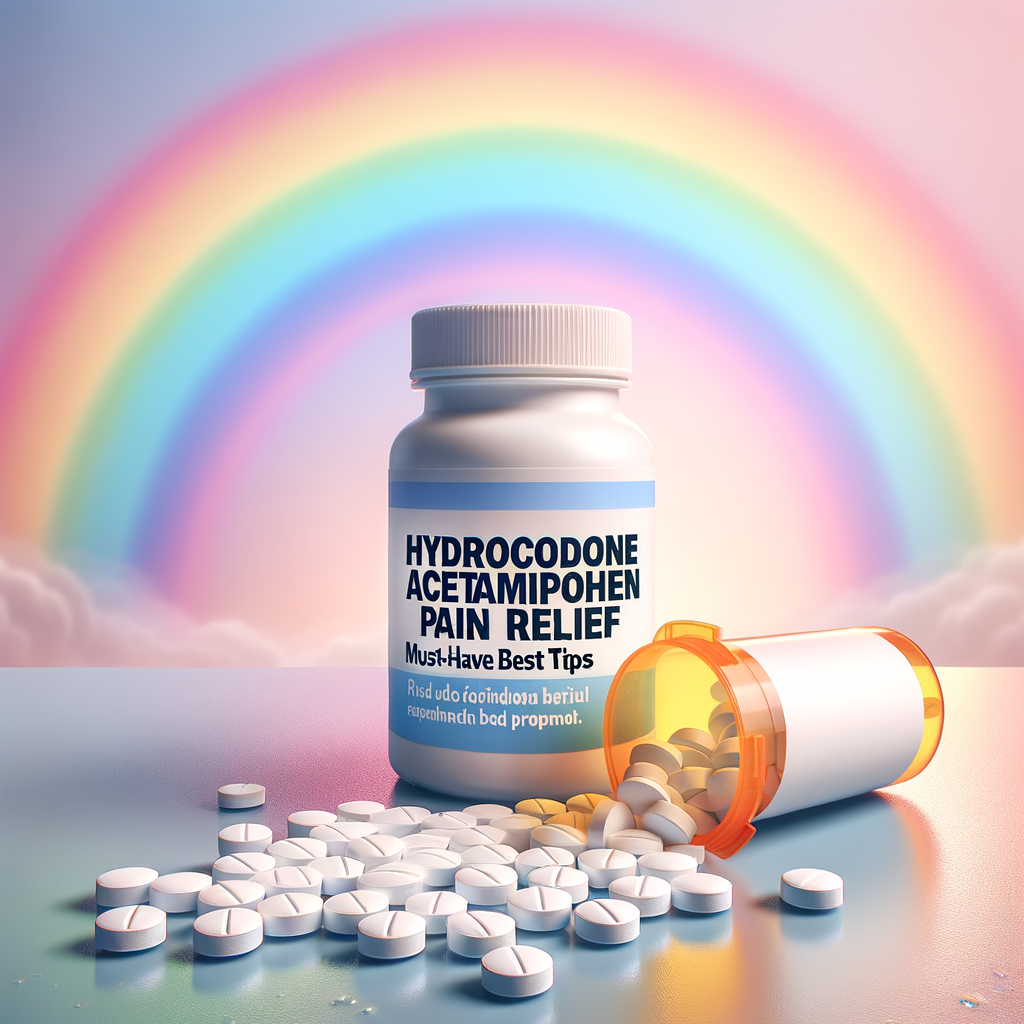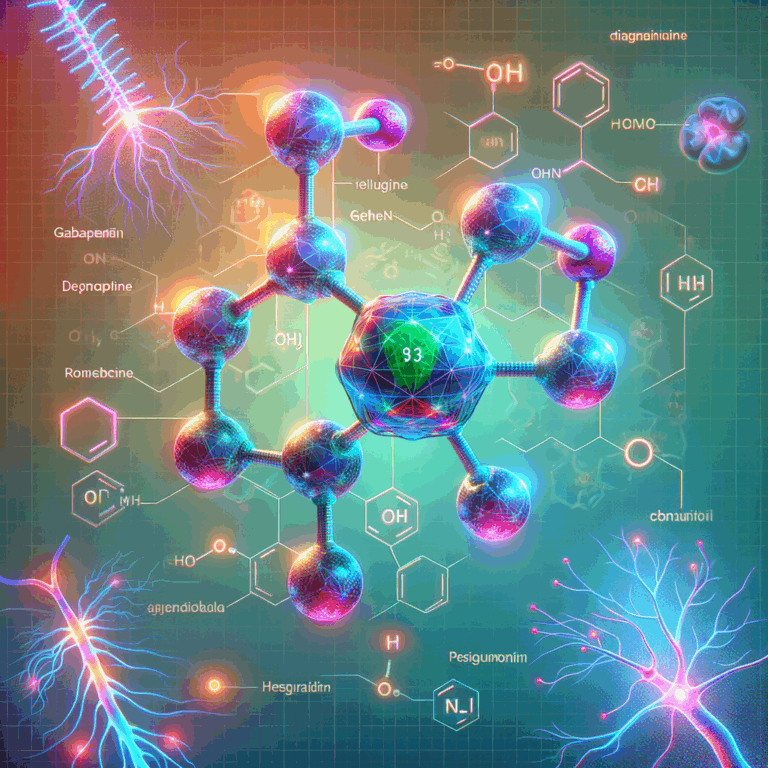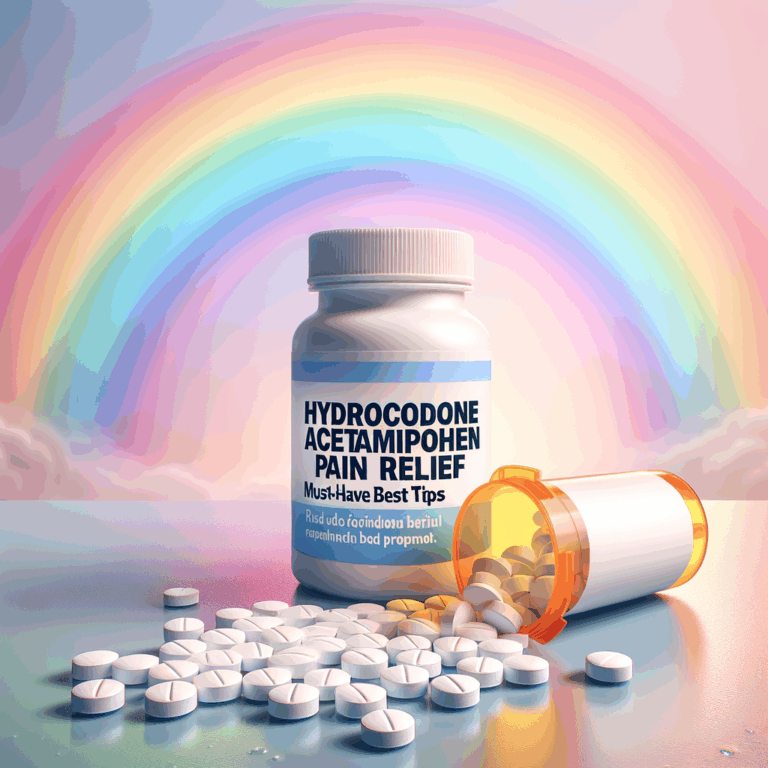
- Understanding Hydrocodone Acetaminophen Pain Relief
- How the combination works
- Essential Safety Principles
- Take only what the doctor prescribes
- Dosage Guidelines and Timing
- Why timing matters
- Dosing table (example)
- Common Side Effects and How to Manage Them
- When side effects are serious
- Reducing Risk of Addiction and Dependence
- Tapering off safely
- Interactions to Watch For
- Medications and substances to avoid
- Practical Tips for Everyday Use
- Travel and work considerations
- Alternatives and Complementary Strategies
- Combining therapies safely
- Special Situations: Elderly, Pregnant, and Liver Disease
- Guidance for specific groups
- Recognizing and Responding to Overdose
- Steps to take during an emergency
- Safe Storage and Proper Disposal
- How to find take-back locations
- Tips for Talking with Your Healthcare Provider
- Useful questions to ask
- Monitoring and Follow-Up
- What your clinician might monitor
- Top Practical Tips — Quick Reference
- Frequently Asked Questions (FAQs)
- 1. How long does hydrocodone acetaminophen stay in my system?
- 2. Can I take ibuprofen with hydrocodone acetaminophen?
- 3. Is it safe to drive while taking this medication?
- 4. Can I drink coffee while taking hydrocodone acetaminophen?
- 5. What if I accidentally take too many pills?
- 6. How can I reduce constipation from hydrocodone?
- 7. Can hydrocodone acetaminophen cause mood changes?
- 8. Is hydrocodone acetaminophen addictive even if I use it for a short time?
- 9. Can I breastfeed while taking hydrocodone acetaminophen?
- 10. How do I dispose of leftover medication if I can’t find a take-back program?
- References
Understanding Hydrocodone Acetaminophen Pain Relief
Hydrocodone acetaminophen combines an opioid with a non-opioid. Together, they relieve moderate to severe pain. Hydrocodone works on the brain and spinal cord. Meanwhile, acetaminophen reduces fever and enhances pain relief.
Patients often receive this combo after surgery or for injury. Doctors prescribe it when non-opioid options fail. Consequently, it remains a common choice in acute pain management.
How the combination works
Hydrocodone binds to opioid receptors. This alters how your brain senses pain. As a result, you feel less pain and discomfort. Acetaminophen blocks pain signals in other ways. It also lowers body temperature when you have a fever.
Together they provide stronger relief than either alone. Yet, that strength increases risk. Therefore, you should use the medicine carefully and for the shortest time needed.
Essential Safety Principles
Safety matters with hydrocodone acetaminophen. The risks include addiction, overdose, and liver damage. Thus, follow your doctor’s directions precisely. Always read the label and dosing instructions.
Never mix this medication with alcohol. Alcohol increases liver damage risk from acetaminophen. Also, it raises the chance of severe drowsiness and breathing problems. Consequently, avoid drinking while using this medicine.
Take only what the doctor prescribes
Do not increase your dose without consulting a clinician. Likewise, do not take it more often than directed. Taking too much acetaminophen can harm your liver. Likewise, too much hydrocodone can depress breathing.
If your pain stays uncontrolled, contact your provider. They can adjust therapy or suggest safe alternatives. Additionally, they can screen for drug interactions and risk factors.
Dosage Guidelines and Timing
Doctors tailor doses to each patient. They consider factors like pain severity and medical history. Usually, adults receive 1-2 tablets every 4 to 6 hours. However, do not exceed the maximum acetaminophen limit.
Most formulations cap acetaminophen at 3000 to 4000 mg per day. Check labels, because some combinations contain different amounts. Adjust doses if you take other acetaminophen-containing products.
Why timing matters
Correct timing maintains steady relief and avoids peaks. For acute pain, take the medication when pain becomes noticeable. Then, stay on schedule if your provider advises scheduled dosing. Alternatively, use it only as needed for intermittent pain.
Spacing doses reduces the risk of accumulation. Also, consistent timing lets you monitor side effects more easily. If you forget a dose, take it when you remember. But skip it if a next dose comes soon.
Dosing table (example)
| Age Group | Typical Dose | Frequency | Max Acetaminophen/Day |
|---|---|---|---|
| Adults | 1–2 tablets (varies by formulation) | Every 4–6 hours as needed | 3,000–4,000 mg |
| Older adults | Lower starting dose often advised | Longer intervals may be needed | Consider lower max per doctor |
| Children | Use pediatric formulation only | Prescribed by weight and age | Determined by clinician |
Note: Use the table as a general guide. Always follow the specific prescription.
Common Side Effects and How to Manage Them
Hydrocodone acetaminophen causes many possible side effects. Common ones include drowsiness, constipation, nausea, and dizziness. Most effects appear early and lessen over time.
You can manage mild side effects at home. For instance, drink fluids and eat fiber to ease constipation. Stand up slowly to avoid dizziness and falls. If nausea persists, talk to your doctor about anti-nausea options.
When side effects are serious
Seek immediate help for trouble breathing, severe rash, or confusion. Also contact a clinician for persistent vomiting. These symptoms may signal serious complications. Overdose requires urgent medical attention.
In particular, signs of liver injury include jaundice and dark urine. If you notice these, stop the medicine and call your doctor. Early treatment improves outcomes.
Reducing Risk of Addiction and Dependence
Hydrocodone is an opioid with addiction potential. However, you can reduce risks with a few strategies. First, use the drug only as prescribed and for the shortest period needed. Second, avoid taking extra doses to chase better pain control.
Communicate openly with your clinician about any substance use history. They can choose safer options and monitor you closely. Additionally, make sure caregivers know the risks and storage precautions.
Tapering off safely
If you use hydrocodone acetaminophen for more than a few weeks, you might develop dependence. To stop safely, follow a taper plan. Your doctor can lower your dose gradually. This reduces withdrawal symptoms like anxiety and muscle aches.
Never abruptly stop after long-term use. Doing so can trigger withdrawal. If you experience severe withdrawal symptoms, contact your clinician right away. They can provide alternative medications or supportive care.
Interactions to Watch For
Hydrocodone acetaminophen interacts with many drugs. Combining it with other central nervous system depressants increases sedation risk. Examples include benzodiazepines and alcohol. Likewise, combining with other acetaminophen products increases liver risk.
Also, certain antidepressants and anticonvulsants may change how your body handles the drug. Always tell your healthcare team about all medications and supplements. Pharmacists can help identify potential interactions.
Medications and substances to avoid
– Alcohol: raises liver damage and respiratory depression risk.
– Benzodiazepines: cause dangerous sedation combined with opioids.
– Other acetaminophen products: risk of overdose.
– Certain MAO inhibitors: may cause serotonin or blood pressure reactions.
– Some anticonvulsants: may increase sedation or alter metabolism.
Consult your clinician before starting or stopping any drug. Even over-the-counter products can cause problems.
Practical Tips for Everyday Use
Keep a medication log. Note times and doses to avoid accidental double dosing. Also track pain levels and side effects. This record helps your clinician adjust therapy.
Store medication securely and out of reach of children. Use a locked container if possible. Dispose of leftover medicine safely. Many pharmacies and police stations offer take-back programs.
Travel and work considerations
Plan ahead when traveling with a prescription. Keep medicine in original packaging with your prescription label. Carry documentation when crossing borders. At work, avoid operating heavy machinery while taking it. Even if you feel okay, your reaction time may slow.
If you need long-term therapy, discuss workplace concerns with your provider. They can guide on safe dosing times and potential accommodations.
Alternatives and Complementary Strategies
You may not need hydrocodone acetaminophen for all pain. Many alternatives can help, often with fewer risks. Nonsteroidal anti-inflammatory drugs (NSAIDs) work well for inflammatory pain. Physical therapy can improve function and reduce reliance on drugs.
Consider complementary methods like heat, ice, or transcutaneous electrical nerve stimulation (TENS). These measures often reduce pain intensity. Moreover, behavioral therapies like cognitive-behavioral therapy help you manage chronic pain.
Combining therapies safely
You can combine non-opioid medications with non-drug methods. For example, use acetaminophen or NSAIDs with physical therapy. This approach often leads to better outcomes. It also reduces opioid exposure.
Discuss combination plans with your clinician. They can ensure no harmful interactions occur. Also, they can recommend dosing schedules that maximize relief and minimize risk.
Special Situations: Elderly, Pregnant, and Liver Disease
Certain populations need extra care. Elderly patients often have slower metabolism. Therefore, they require lower doses and closer monitoring. Likewise, people with liver disease must avoid excess acetaminophen.
Pregnant or breastfeeding women should discuss risks and benefits. Hydrocodone crosses the placenta and passes into breast milk. Providers may recommend alternatives or closely monitor mother and baby.
Guidance for specific groups
– Elderly: start low and go slow. Monitor for falls and confusion.
– Pregnant: avoid unless benefits outweigh risks. Use under supervision.
– Liver impairment: use lower acetaminophen limits or avoid the drug.
– Children: use pediatric formulations only, and follow weight-based dosing.
Always inform your clinician about pregnancy, breastfeeding, or liver problems.
Recognizing and Responding to Overdose
Overdose can be life-threatening. Watch for extreme drowsiness, slow breathing, or unresponsiveness. Pinpoint pupils and cold, clammy skin also raise concern.
If you suspect overdose, call emergency services right away. If available, administer naloxone for opioid reversal. Also, emergency care can treat acetaminophen toxicity with antidotes like N-acetylcysteine.
Steps to take during an emergency
1. Call emergency services immediately.
2. If trained, give naloxone for opioid overdose.
3. Provide basic first aid and stay with the person.
4. Bring medication bottles to the hospital for identification.
Fast action saves lives. Having naloxone on hand can prevent fatal outcomes in high-risk situations.
Safe Storage and Proper Disposal
Store hydrocodone acetaminophen in a secure, dry place. Keep it away from heat and sunlight. Protect it from children and pets. A locked cabinet works well.
Dispose of unused pills safely. Many communities offer take-back programs. Alternatively, mix pills with undesirable substances before discarding. Still, take-back remains the preferred method. Proper disposal prevents misuse and poisoning.
How to find take-back locations
– Check local pharmacy websites.
– Contact your municipal waste management.
– Use government resources to locate drop-offs.
– Call non-emergency police lines for guidance.
If no take-back exists, follow FDA guidance for home disposal. Remove personal labels and place pills in a sealed container first.
Tips for Talking with Your Healthcare Provider
Be honest about your pain and substance use history. Mention alcohol or drug issues openly. This transparency helps clinicians choose safe treatment. Ask about goals for pain control and plans to minimize opioid use.
Request written instructions and a clear taper plan if appropriate. Also ask about non-opioid alternatives. Finally, ensure your clinician explains side effects and emergency signs.
Useful questions to ask
– What is the expected duration of treatment?
– What are the specific dosing instructions?
– How will we reduce or stop the medication?
– Are there safer alternatives for my condition?
– What should I do in case of side effects or overdose?
Prepare these questions before appointments. Bring your medication list and any concerns.
Monitoring and Follow-Up
Regular follow-up helps keep care safe. Your clinician may schedule visits to assess pain and function. They might also check for signs of misuse or side effects. Urine drug testing can help monitor adherence when needed.
If pain improves, work with your clinician to taper off. If pain persists, they can adjust therapy or refer you to specialists. Effective monitoring improves outcomes and reduces risks.
What your clinician might monitor
– Pain levels and physical function
– Side effects and sleep quality
– Signs of misuse or addiction
– Liver function tests if needed
– Medication adherence through pill counts or tests
Be proactive. Report any new symptoms promptly. This helps prevent complications.
Top Practical Tips — Quick Reference
– Always follow the prescription exactly.
– Avoid alcohol and other sedatives.
– Track doses and pain levels in a log.
– Use non-drug methods to reduce reliance on medication.
– Store securely and dispose of leftovers properly.
– Discuss risks and taper plans with your doctor.
– Keep naloxone available if overdose risk exists.
– Report side effects and liver warning signs quickly.
These tips promote safe and effective Hydrocodone Acetaminophen Pain Relief.
Frequently Asked Questions (FAQs)
1. How long does hydrocodone acetaminophen stay in my system?
Hydrocodone clears from blood in about 24 hours for most people. However, metabolites can appear longer in urine. Detection times vary by test and individual factors.
2. Can I take ibuprofen with hydrocodone acetaminophen?
Yes, you can often combine ibuprofen safely. Doing so may provide better pain control. Still, ask your clinician before combining medications.
3. Is it safe to drive while taking this medication?
Avoid driving until you know how the drug affects you. Hydrocodone can impair attention and reaction time. Wait until drowsiness resolves.
4. Can I drink coffee while taking hydrocodone acetaminophen?
Moderate caffeine usually poses no major risk. However, caffeine may mask drowsiness. Monitor your alertness and avoid heavy consumption.
5. What if I accidentally take too many pills?
Seek emergency care immediately. Overdose treatment may include naloxone and activated charcoal. For acetaminophen overdose, hospitals use N-acetylcysteine.
6. How can I reduce constipation from hydrocodone?
Increase fiber, fluids, and physical activity. Use stool softeners and laxatives if needed. Ask your clinician for specific products.
7. Can hydrocodone acetaminophen cause mood changes?
Yes, some people experience mood swings or depression. Report severe mood changes or suicidal thoughts to your clinician.
8. Is hydrocodone acetaminophen addictive even if I use it for a short time?
Short-term medical use carries lower addiction risk. However, some people may develop dependence quickly. Use as prescribed and monitor for cravings.
9. Can I breastfeed while taking hydrocodone acetaminophen?
Hydrocodone may pass into breast milk. Providers weigh risks and benefits for each case. They may suggest alternatives or close monitoring.
10. How do I dispose of leftover medication if I can’t find a take-back program?
Mix pills with an unpalatable substance, place in a sealed bag, and throw in household trash. Remove personal labels from containers first. Follow local and FDA guidance.
References
– U.S. Food and Drug Administration (FDA). Acetaminophen and prescription combination products. https://www.fda.gov/drugs/special-features/acetaminophen-and-prescription-combination-products
– Centers for Disease Control and Prevention (CDC). Opioid overdose: prescribing & treatment. https://www.cdc.gov/drugoverdose/index.html
– National Institutes of Health (NIH). Hydrocodone information. https://www.ncbi.nlm.nih.gov/books/NBK548759/
– American Society of Health-System Pharmacists (ASHP). Patient education on opioids. https://www.ashp.org/
– FDA. Disposal of unused medicines: What you should know. https://www.fda.gov/consumers/consumer-updates/where-and-how-dispose-unused-medicines
If you want, I can tailor this post for a clinic, pharmacy website, or patient handout. Tell me the audience and I’ll adjust tone and structure.



